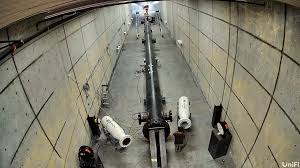
Breaking News
 Battleborn Batteries Responds! Their Overheating Device is a "Feature" not a "Problem
Battleborn Batteries Responds! Their Overheating Device is a "Feature" not a "Problem
 Actor Liam Neeson Outs Himself as MAHA After Narrating Pro-RFK Jr. Documentary Slamming...
Actor Liam Neeson Outs Himself as MAHA After Narrating Pro-RFK Jr. Documentary Slamming...
 Kyle Rittenhouse announced on social media Wednesday that he has tied the knot.
Kyle Rittenhouse announced on social media Wednesday that he has tied the knot.
 JUST IN: President Trump Grants Tina Peters Pardon
JUST IN: President Trump Grants Tina Peters Pardon
Top Tech News
 Build a Greenhouse HEATER that Lasts 10-15 DAYS!
Build a Greenhouse HEATER that Lasts 10-15 DAYS!
 Look at the genius idea he came up with using this tank that nobody wanted
Look at the genius idea he came up with using this tank that nobody wanted
 Latest Comet 3I Atlas Anomolies Like the Impossible 600,000 Mile Long Sunward Tail
Latest Comet 3I Atlas Anomolies Like the Impossible 600,000 Mile Long Sunward Tail
 Tesla Just Opened Its Biggest Supercharger Station Ever--And It's Powered By Solar And Batteries
Tesla Just Opened Its Biggest Supercharger Station Ever--And It's Powered By Solar And Batteries
 Your body already knows how to regrow limbs. We just haven't figured out how to turn it on yet.
Your body already knows how to regrow limbs. We just haven't figured out how to turn it on yet.
 We've wiretapped the gut-brain hotline to decode signals driving disease
We've wiretapped the gut-brain hotline to decode signals driving disease
 3D-printable concrete alternative hardens in three days, not four weeks
3D-printable concrete alternative hardens in three days, not four weeks
 Could satellite-beaming planes and airships make SpaceX's Starlink obsolete?
Could satellite-beaming planes and airships make SpaceX's Starlink obsolete?
Mach-23 potato gun to shoot satellites into space

I had an opportunity to sit down with the CEO and founder of Longshot, Mike Grace. "Longshot?" you ask? Prior to the other week, I'd have said the same. This was a company I'd not heard of in an area of which I'm not all that familiar with – flinging stuff into orbit sans rockets. SpinLaunch, sure.
You see, the other week I was forwarded an email from the boss that read something along the lines of "I'm super busy, but I think Joe would be up for it." Loz knows me pretty well over the last dozen or so years of collaborating on various projects. If he says I'd be interested, he's likely right.
Two years ago, Loz had written an article with "Nazi über-cannon" in the title. I balked when I read the title, but was immediately sucked into this wild idea and this equally wild CEO and how he was addressing potential investors.
Longshot wants to fire stuff out of a staged gas-powered cannon into space. And when I say cannon, I mean miles and miles of cannon at Mach 23. Wait, what?
We'll dig through history for a moment before getting back to present day:
The concept of using cannons to special-delivery items – iron balls, langrage, sabots, 155-mm HE shells, APFSDS long-rod darts – to neighboring villages and cities has been around for about 700 years ... you know, tools for war, death and destruction.
The concept of using cannons to blast people (or things) into space has been around since at least the 19th century, when Jules Verne penned the 1865 banger From the Earth to the Moon. In it, some bored artillery engineers build a massive 900-ft (274-m) cannon called the Columbiad. It's stuffed with a 9-ft (2.7-m) diameter capsule for three adventure-seeking astronauts and 20,000 lb of gun cotton to get the party started. I won't spoil the book for you if you haven't read it. I just wanted to illustrate that the idea has existed since long before you and I were born.
Fun fact: in the book, they launch from what's basically modern-day Cape Canaveral in Florida. And when they return to Earth? Yep, splash down in the ocean, just like the modern era. That Verne guy had it figured out. Never mind the 22,000 g's needed to get out of Earth's atmosphere.
Skip forward to the 1960s, when an upstanding Canadian gentleman by the name of Gerald Bull dials it up to 11 with Project HARP (High Altitude Research Project). The HARP team welded two 68-ft-long (20.7-m) 16-in/50 Mark 7 naval gun tubes with 16-inch (406.4-mm) bore diameters end-to-end as if they were straws and spitballs. With this 119-ft (36-m) monster cannon – about the same length as the infamous WWI Paris Gun – they shot something called the Marlet 2C 111.85 miles (180 km) into the air, well above the Kármán line – the transition between the atmosphere and outer space.

 First totally synthetic human brain model has been realized
First totally synthetic human brain model has been realized Mach-23 potato gun to shoot satellites into space
Mach-23 potato gun to shoot satellites into space

